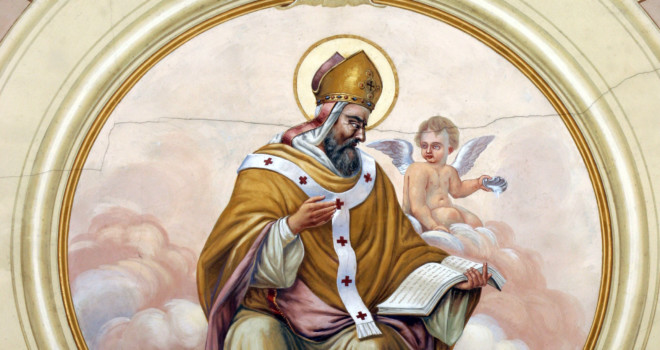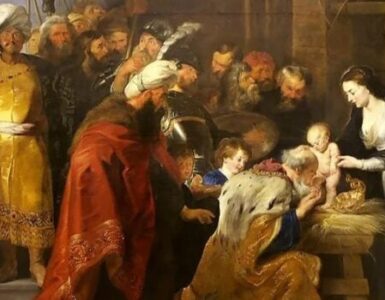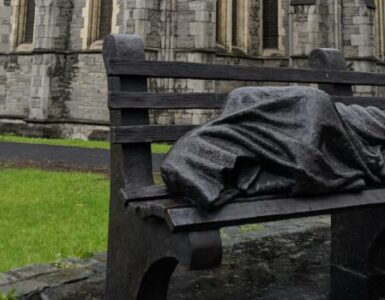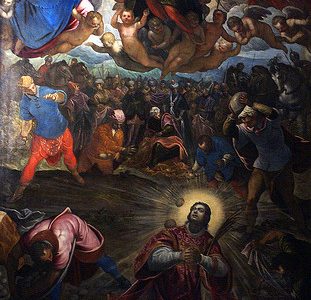I am married to an Augustine scholar. I studied theology both in college and graduate school, but I was more drawn to St. Thomas Aquinas than St. Augustine. Being married to a man who loves St. Augustine has made me love him more, too.
Recently, my husband traveled to Italy on a grant to visit archeological sites related to the early Church. As his traveling companion, I had the opportunity to visit the sites of early baptistries, cathedrals, and yes — lots of sites related to St. Augustine.
The Baptistry
Milan, Italy is a bustling, modern city. The streets are filled with businessmen and women on bikes and riding trolleys. It is known as the fashion capital of the world. But when you emerge from Milan’s underground train depot, you are greeted not with the site of shops or skyscrapers – but with the Duomo di Milano. The Milan Cathedral was not built in the era of the early Church, but it is built on top of the site of an earlier cathedral. More importantly, under the cathedral is an excavation site of a baptistry from the period of the early church. As old as it is, the beautiful black and white mosaic pattern of the floor of the baptistry is still partially intact. You can see where water would have flowed into the baptismal font.
This font is where St. Augustine was baptized.
In many of the holy sites in Italy (such as Assisi) pilgrims
are everywhere. What was striking about Milan was that it was clear that most
of the people who were visiting the site were tourists, not pilgrims. There was
no kneeler or vigil candles by that ancient baptistry. There were no signs of
devotion to the great saint baptized there.
But the look on the face of my Augustine scholar husband
said it all. There was beauty there, and peace (despite the tourists). The
Church would not be the Church that it is if it weren’t for St. Augustine. If
he had not stood in that font, submerged and welcomed into new life in Christ,
the Church would not be the same. On that day, over 1000 years ago, St. Ambrose
stood and baptized Augustine, and neither knew what impact their actions that
day would have.
Ostia Antica and the
Conversation
Close to her death, Augustine and his mother, St. Monica,
famously had a profound, beautiful conversation about the faith and heaven. At
the time, Monica was living in what is now Ostia Antica, the ruins of the ancient
port of Rome. The ruins of this town are extensive, filled with mosaics and
ancient structures. But nestled in between the ruins of houses and shops is what
remains of the structure of the early basilica. The columns are still visible,
and it is easy to envision where the aisles and apse were. By this point in our
visit to Ostia, I was trying to keep our restless toddler happy, and I almost
missed the significance of this site. I paced on the path with our daughter and
waited for my husband to finish looking at the ruins of the basilica.
He didn’t rush. He wandered slowly, quietly, through the
ancient aisles, apse, and nave. When he emerged, he had the same look of peace
on his face that he had had at the site of Augustine’s baptism. “Just think,”
he said. “Monica and Augustine probably prayed here. They probably had their
famous talk somewhere around here.”
The restlessness of the toddler seemed less urgent. I looked
around the ruins through his eyes, and I saw it – I saw this ancient man and
his mother walking together, praying together, worshiping God together. For a
glimmer of a moment, it all seemed real. Augustine and Monica went to Mass here
– probably praying with mothers who were distractedly pacing with fussy
toddlers. It is easy for me to forget that the saints are real men and women,
just like me. But as I looked at the ruins of the basilica, I knew in my heart
that they were.
The Humble Tomb
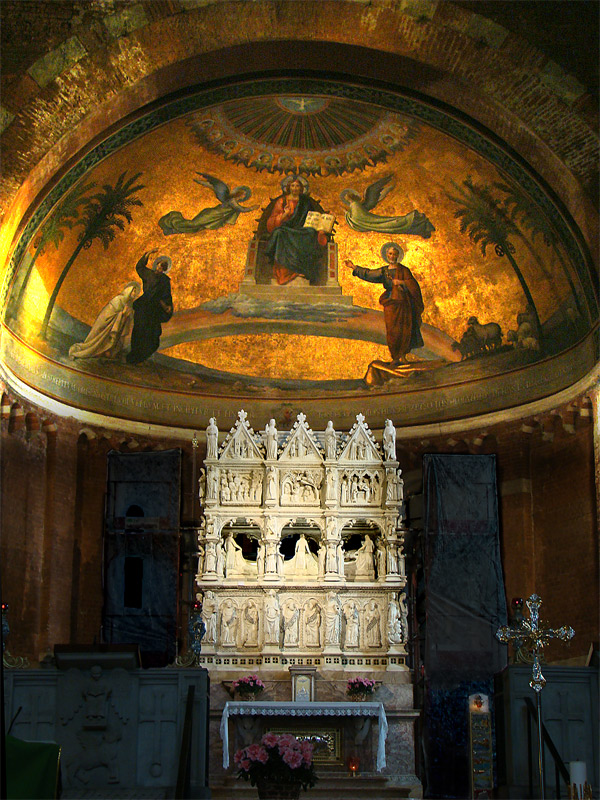
St. Monica is buried in Rome, and it is easy to visit. St. Augustine’s tomb, however, is off the beaten path. Augustine is buried in Pavia, about an hour south of Milan. Pavia is a small, humble town. It is reached by driving down a series of country roads. It is not filled with tourists. If you didn’t know that his tomb was there, you could easily miss it. In fact, the Basilica of San Pietro in Ciel d’Oro is easy to miss — the entrance nestled in the far corner of a tree-linedpark.
Unlike many other holy sites in Italy, this site is not bustling and busy. If you are visiting it, it is because you want to visit it. It is a silent church. Rising from the center of the sanctuary is the stunning, carved tomb of St. Augustine. As impressive as the tomb is, more memorable was the humility of this saint, buried in this humble spot. The church was so empty and peaceful, and pilgrims were permitted to walk up side stairs and pray in the sanctuary, right on the steps of the tomb.
And there, we prayed. We gazed at the spot where the bones
of Augustine lay. There, in a simple stone niche in a larger tomb, lay the remains
of this great doctor of the Church. These bones are the ones that will be
glorified at the final resurrection. But, in the meantime, they rest here, as a
reminder of this saint’s hope in the resurrection. When visiting the tomb of St.
Augustine (or any saint), you can’t help by feel that same hope.
St. Augustine, humble and holy doctor of the Church, pray
for us. Pray that we, too, may live in the hope of Christ’s resurrection.


